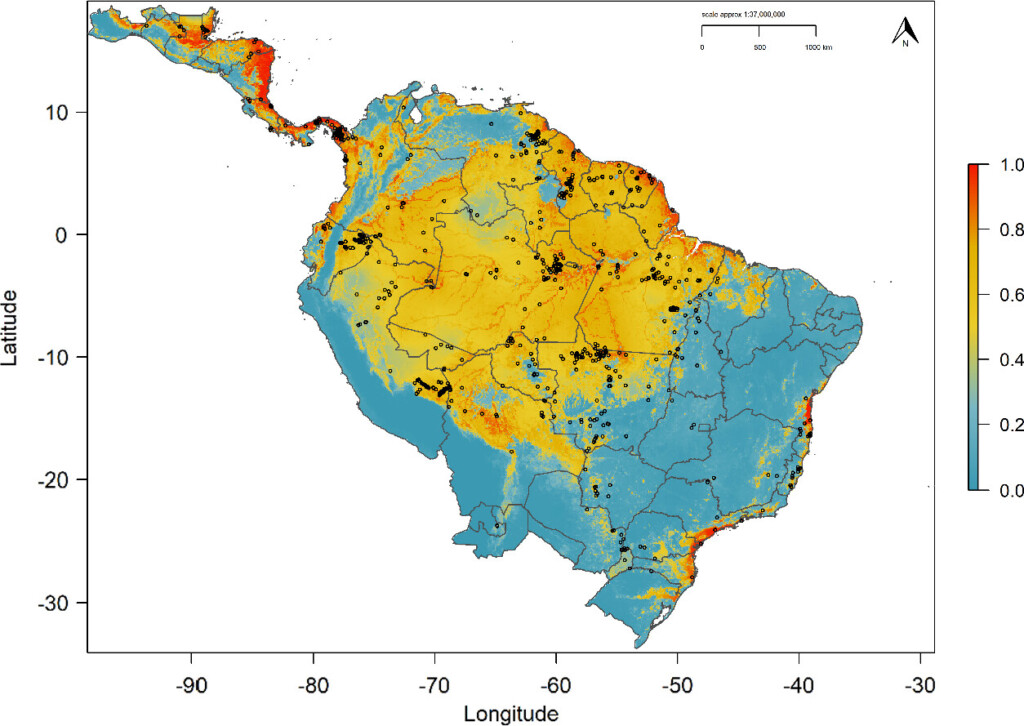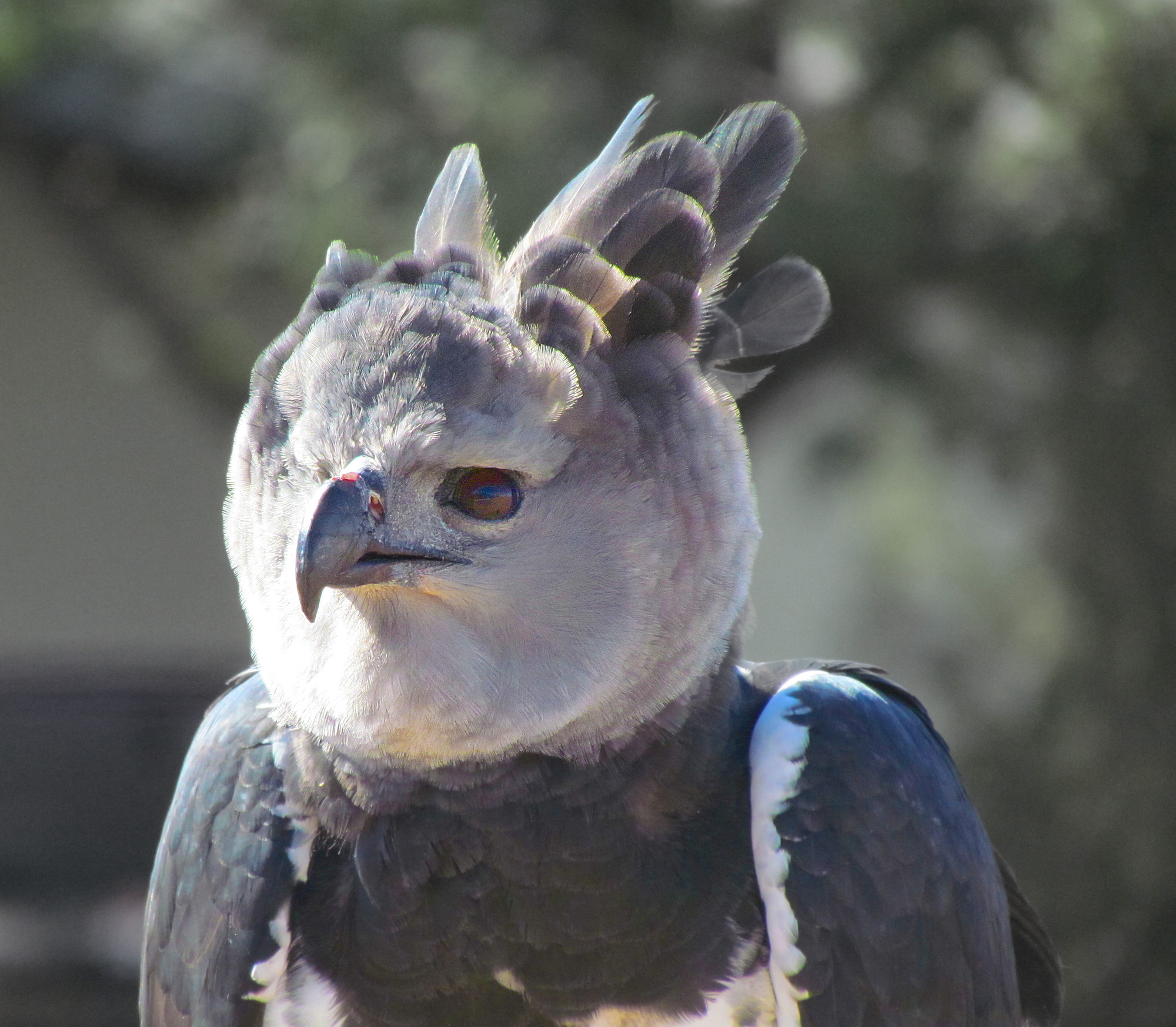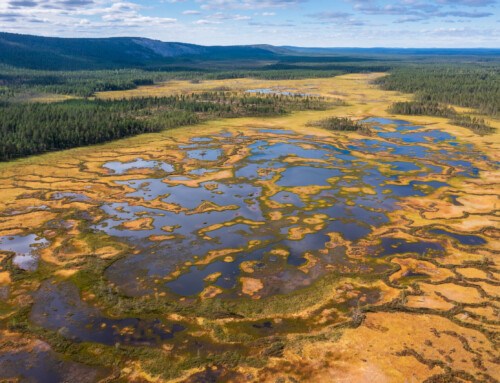
LINKED PAPER
Reduced range size and Important Bird and Biodiversity Area coverage for the Harpy Eagle (Harpia harpyja) predicted from multiple climate change scenarios. Sutton, L. J., Anderson, D. L., Franco, M., McClure, C. J., Miranda, E. B., Vargas, F. H., Vargas, González, J. J. & Puschendorf, R. 2022. IBIS. DOI: 10.1111/ibi.13046. VIEW
Although temperature increases are expected to be lower in the tropics compared to higher latitudes, tropical bird species might be more vulnerable to climate change (Şekercioğlu et al. 2012). These species tend to have narrow thermal tolerances, which may hinder their ability to expand into new areas (Harris et al. 2011). This constraint is especially relevant for habitat specialists, such as the Harpy Eagle (Harpia harpyja) – an apex predator that thrives in lowland tropical forests (Sutton et al. 2021). In a recent study, researchers employed species distribution modelling to forecast the future range of this iconic species under various climate change scenarios. The results paint a bleak picture.
Habitat loss
The researchers initially investigated the environmental factors influencing the current distribution of the Harpy Eagle. At the moment, this predator can be found across Amazonia and the Guiana Shield and along a corridor from Colombia to Central America along the Caribbean coast (see figure below). This distribution is primarily shaped by the presence of evergreen forests, diurnal temperature patterns and elevation. Leveraging this information, the researchers could assess the future distribution of the Harpy Eagle under different CO2 emission scenarios. They projected a reduction in range size of 14.4% under a high-emissions scenario and 7.3% under a low-emissions scenario by 2090. A significant loss in suitable habitat.

Figure 1.Predicted current distribution for the Harpy Eagle. The warmer the colour, the more suitable area.
Protected areas
Although the shrinking range size is concerning, there may still be hope. The predicted habitat loss might not affect the Important Bird and Biodiversity Area (IBA) network, which prioritizes key areas for the long-term maintenance of bird populations (Donald et al., 2019). Currently, the IBA network overlaps with 18% of the Harpy Eagle’s habitat. However, simulations suggest that by 2090, under a high-emissions scenario, the network would cover 14% less area, and under a low-emissions scenario, 3.3% less area. Therefore, it is crucial to re-evaluate the location of these protected areas to ensure adequate protection for the range of the Harpy Eagle and numerous other species relying on similar habitats (Hannah et al., 2007).
References
Donald, P.F., Fishpool, L.D., Ajagbe, A., Bennun, L.A., Bunting, G., Burfield, I.J., Butchart, S.H., Capellan, S., Crosby, M.J., Dias, M.P. & Diaz, D. (2019). Important Bird and Biodiversity Areas (IBAs): the development and characteristics of a global inventory of key sites for biodiversity. Bird Conservation International 29: 177– 198. VIEW
Hannah, L., Midgley, G., Andelman, S., Araújo, M., Hughes, G., Martinez-Meyer, E., Pearson, R. & Williams, P. (2007). Protected area needs in a changing climate. Frontiers in Ecology and the Environment 5: 131– 138. VIEW
Harris, J.B.C., Sekercioglu, C.H., Sodhi, N.S., Fordham, D.A., Paton, D.C. & Brook, B.W. (2011). The tropical frontier in avian climate impact research. Ibis 153: 877– 882. VIEW
Şekercioğlu, Ç.H., Primack, R.B. & Wormworth, J. (2012). The effects of climate change on tropical birds. Biological Conservation 148: 1– 18. VIEW
Sutton, L.J., Anderson, D.L., Franco, M., McClure, C.J.W., Miranda, E.B., Vargas, F.H., Vargas González, J.J. & Puschendorf, R. (2021). Geographic range estimates and environmental requirements for the Harpy Eagle derived from spatial models of current and past distribution. Ecology and Evolution 11: 481– 497. VIEW
Image credits
Top right: Harpy Eagle (Harpia harpyja) | Jitze Couperus | CC BY-SA 2.0 Wikimedia Commons
Blog posts express the views of the individual author(s) and not those of the BOU.
If you want to write about your research in #theBOUblog, then please see here





